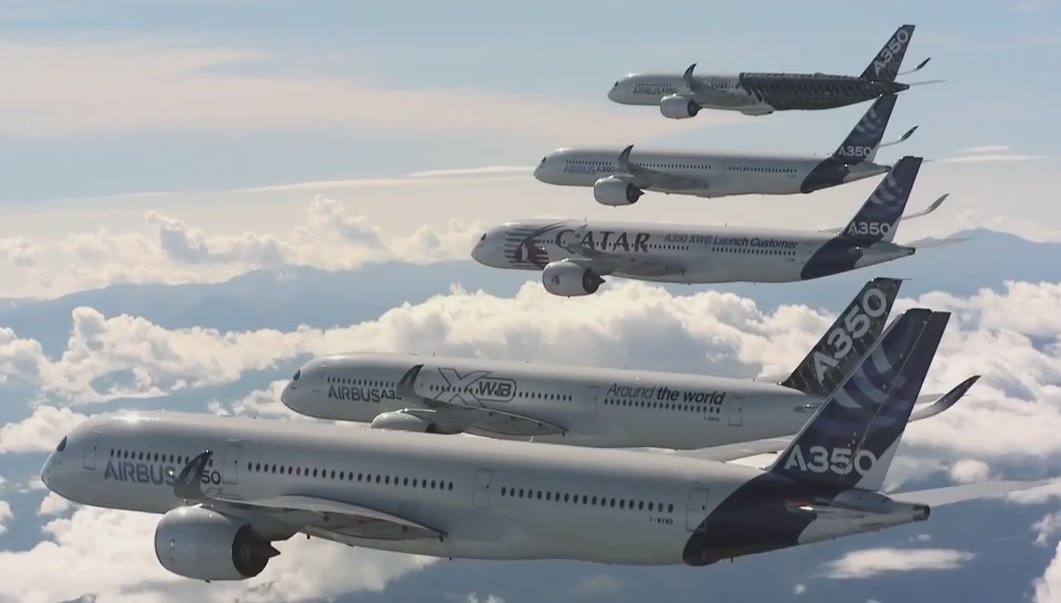European manufacturer forecasts nearly 50,000 aircraft in service within two decades as passenger traffic surges and airlines face mounting capacity pressures.
The worldwide commercial aviation fleet will expand to more than 49,000 aircraft by 2044—roughly double its current size—according to projections released by Airbus in its latest Global Services Forecast.
The European manufacturer anticipates a 10% year-over-year increase in service demand for 2025, with the total services market climbing to approximately $311 billion by mid-century. This growth trajectory reflects a compound annual growth rate of 3.6% driven by escalating air traffic and expanding airline operations across all sectors.
Passenger numbers will hit five billion this year and are expected to reach 10 billion by 2044, Airbus data shows. The surge creates immediate pressure on carriers already operating at capacity limits, forcing operators to secure more fuel-efficient aircraft for regional, short-haul and long-haul routes.
Service Demand Breakdown
The projected $311 billion services market splits across five key categories. Off-wing maintenance commands the largest share, followed by on-wing maintenance, aircraft modifications and upgrades, digital connectivity solutions and crew training programs needed to support the expanding fleets.
China, Europe and North America will represent the three biggest service markets by 2044, while China, South Asia and the broader Asia-Pacific region will post the fastest compound annual growth rates.
Production Challenges Loom
Airbus faces substantial delivery obligations with more than 8,500 aircraft currently on order. The backlog spans multiple product lines: the A220 family for regional operations, the A320 family for short-haul routes, the A330neo and the A350 family—which includes the A350F freighter model still awaiting certification.
The manufacturer delivered 507 aircraft to 79 customers through September, including 73 planes to 41 operators in September alone. Net orders for the first nine months totaled 514 aircraft from 33 customers, some undisclosed.
To address the backlog, Airbus announced plans earlier this year to ramp A320 family production to 75 aircraft monthly by 2027. The A220 production rate will increase to 14 per month in 2026, while A350 output will reach 12 monthly units by 2028. A330neo production faces a modest bump from four to five aircraft per month by 2029.
Supply chain disruptions and delivery delays continue to slow output on several popular models, compounding the production challenge.
Boeing Sees Similar Trajectory
The American manufacturer projects a comparable fleet expansion, with Boeing’s 2025 Commercial Market Outlook forecasting about 49,640 active commercial aircraft by 2044. Narrowbody jets will account for more than 70% of that fleet, with widebody aircraft representing 17%. The remainder will consist of regional and freighter aircraft.
Boeing’s analysis indicates regional jet fleets will contract by over 28% during the next two decades. Many of the new aircraft entering service will replace aging models rather than solely supporting growth, as carriers prioritize more efficient designs.
While North America, Eurasia and China will operate the largest fleets by 2044, passenger traffic growth will concentrate in South Asia, Southeast Asia, Africa and China, according to Boeing data.
Both manufacturers face the dual challenge of meeting unprecedented order books while navigating ongoing supply chain constraints that have hampered production schedules across the industry.

Key Takeaways
- Airbus projects the global commercial aircraft fleet will double to more than 49,000 aircraft by 2044, with passenger traffic reaching 10 billion annually.
- The aviation services market will grow to approximately $311 billion by 2044, representing a 3.6% compound annual growth rate driven by increased air traffic demand.
- Airbus faces a backlog exceeding 8,500 aircraft orders while dealing with supply chain constraints and plans to increase A320 production to 75 units monthly by 2027.
- Boeing forecasts similar growth with nearly 49,640 active aircraft by 2044, though regional jet fleets will decline more than 28% as carriers prioritize efficient replacements.








